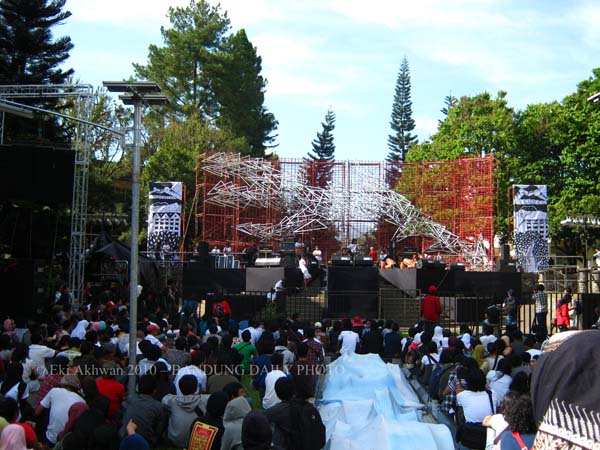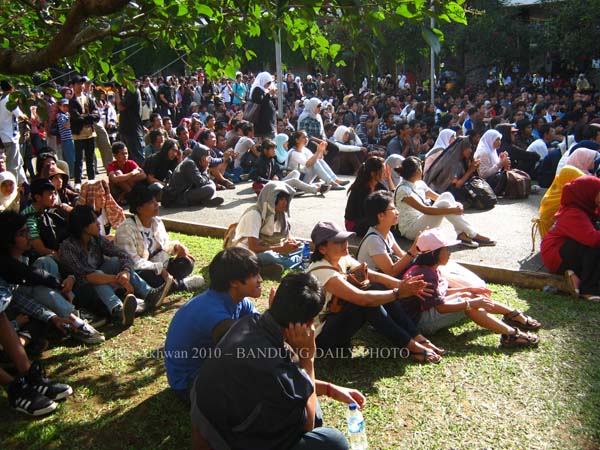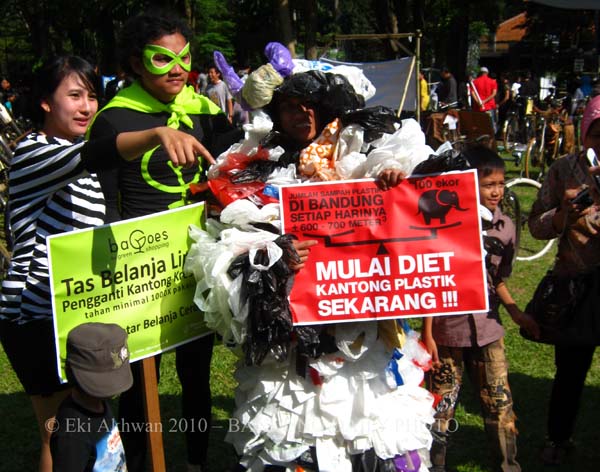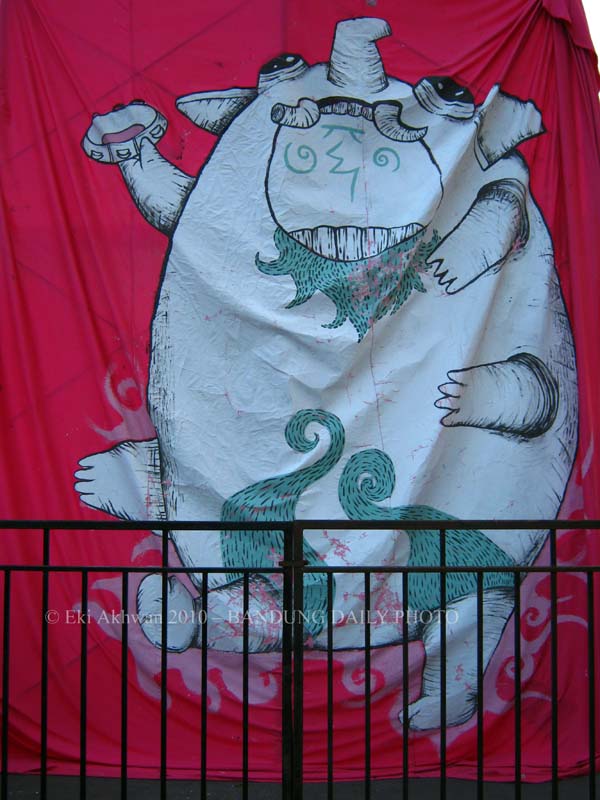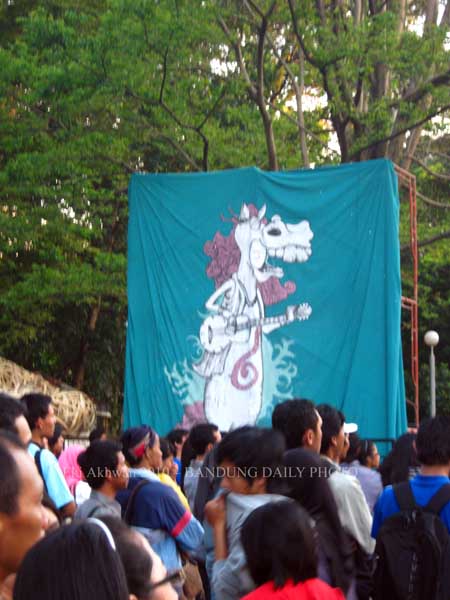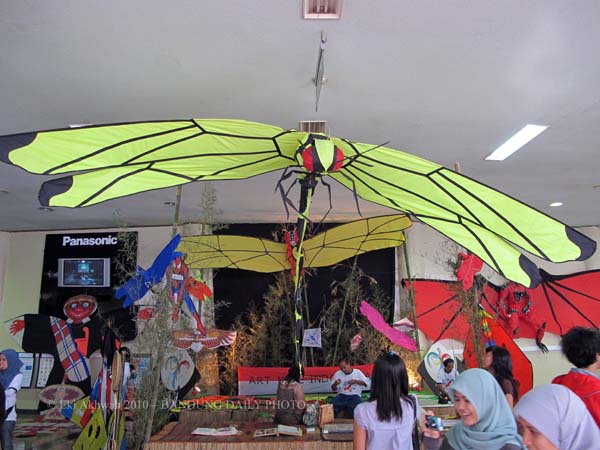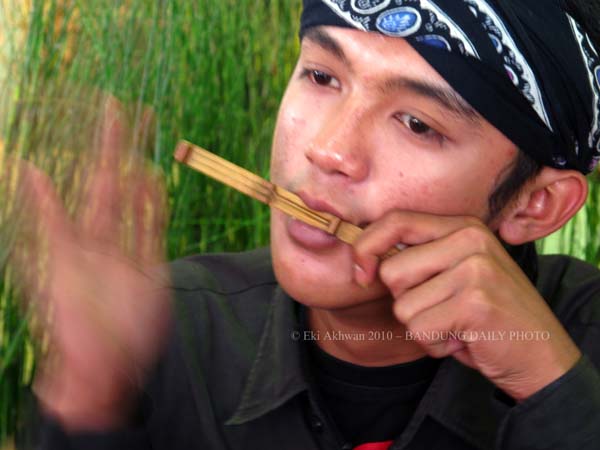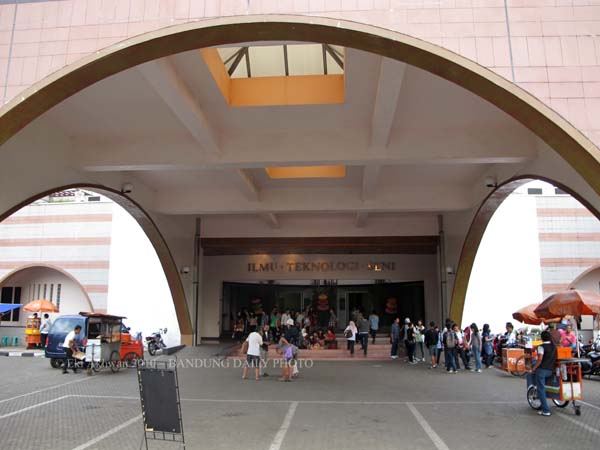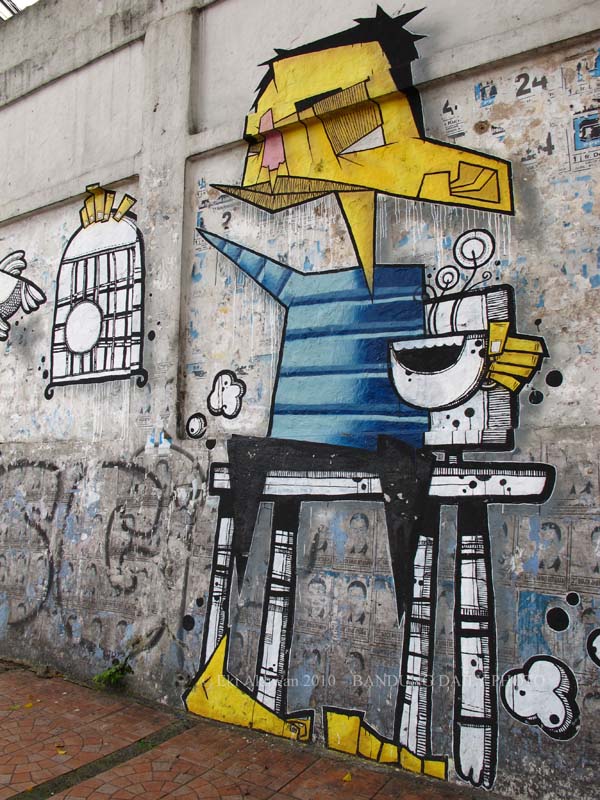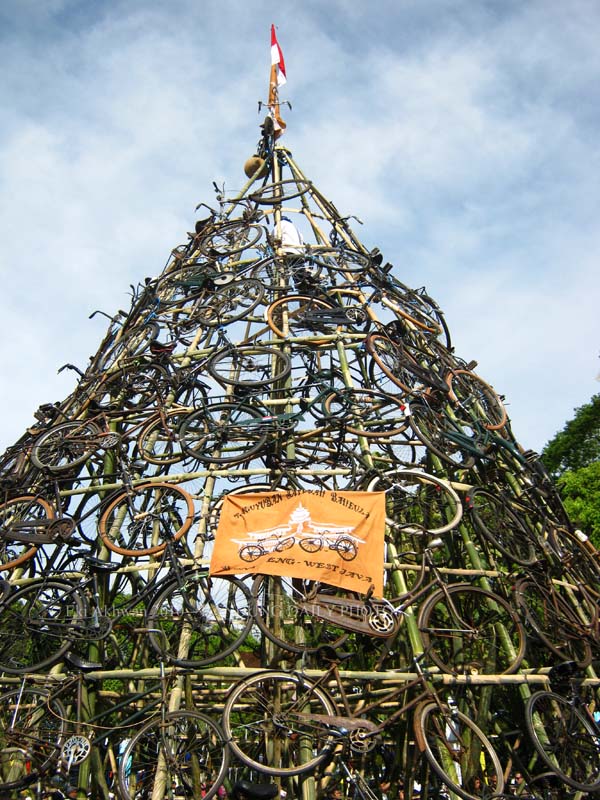
This mountain of bikes (instead of mountain bikes) is one of the installation art pieces displayed at the
Pasar Seni ITB 2010 (the 2010 Bandung Institute of Technology Art Market) that was held today at ITB's campus ground.
Pasar Seni ITB (PS ITB) is one of the largest art market events in the country. It has been held every four years since 1972, and this year is its 10th, which is an auspicious number considering that it was held on the 10th of October 2010, was officially opened at 10:00 o'clock, and lasted only for 10 hours (that makes it 10 10 10 10 10 10 - what a binary number sequence!).
This year's PS ITB carries the theme "The Forgotten" and is attended by no fewer than 344 art 'houses' and communities, artists, education, and culinary stands plus representative delegates from Malaysia, the United States, and Germany.
The idea for this art market event was originally conceived to provide a marketplace where artists, art dealers, and the public at large can meet. In this way, it is hoped that the distance between art and its public will be narrowed. It is also expected to become a
way means to promote Indonesia's creative industry and art.
In addition to the exhibitions and stands, the ITB Art Market also has great art performances.

Here is the Ganesha street that runs in southern end of ITB's main campus. Today the street was turned into Art Street. As you can see from the picture, the gate to this street is made entirely of twigs.

And here's another installation art piece I saw today. This one was installed at the center of the campus (and the art market ground).



